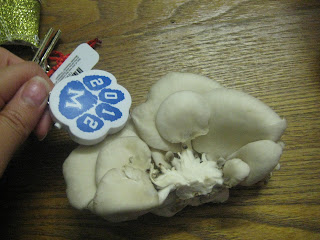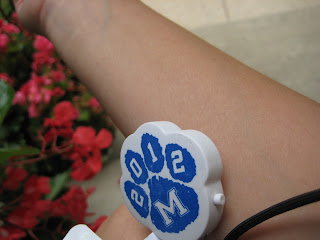Tuesday, September 7, 2010
Wednesday, September 1, 2010
Ap Biology 2
Spore- a small, usually one-celled reproductive structure produced by seedless plants, for example this picture of a fern contains spores.
Angiosperm- flowering plants like in this picture, a rose is an example of a flowering plant.
Fruit –fleshy with seed- these are fleshy fruit that has 1 or more seeds with a soft fleshy inside like this picture of strawberries.
 |
| Tendril of a plant- special stem used by climbing plants for support and attachment like in this photo of a plant that has a tendril |
Parasite- they are usually smaller then the host and take control of the host for example this picture of a dog. Dogs usually contain fleas and fleas are example of parasites.
Arthropod- an animal that has joined limbs, segmented body and has an exoskeleton made of chitin. For example this photo of a crab, it has an exoskeleton made of chitin.
Chitin- which is found on outer- skeleton of insects, lobster and crabs. For example this photo of a lobster.
Fruit with dry seed- these are fruit that are dried and contains 1 or more seeds, for example these mangos, they are dried.
Anther and Filament- filaments are the long-narrow tubes that support the pollen sacs and hold them up high within the petals of the flower to assist pollination; the anther is located at tip of the flower stamens. This picture shows a lily which shows the filament, the long tubes and the anther at the tip.
Endosperm- is the tissue produced in plants during fertilization. It also produce nutrition on form of starch like this picture, the whiteness inside the coconut represents the endosperm.
Protein- fibrous – strong proteins that is used in organism for support and protection, for example this photo of a fingernail, a fingernail contain strong proteins.
Animal with segmented body- an animal with bodies separated into parts, for example this ant.
Basidiomycete- a group of higher fungi that includes mushroom, rusts, and puffballs. For example this photo of mushrooms.
Adaption of a plant- special features that allows a plant to live in a particular place or habitat, for example this photo shows a plant climbing over other objects to adapt to its environment.
Mycelium- vegetative part, of a fungus, made of a mass or network of threadlike tubes, for example this picture of a mushroom, mushrooms contain little white thread.
Insect- usually has a three part body, three pairs of jointed leg, a pair of eyes and two antennae. Like this picture of a fly.
Exoskeleton- protective external skeleton, that provides points of attachment for muscles. For example this picture which is a crab, a crab has a protective external skeleton.
Coelomate- this animal contains a fluid filled body cavity called coelom, for example a worm because it contains coelom. In this picture shows dirt with a smal worm, dirt is where worms usually live under.
Ectotherm- organisms that control body temperature through external mean such as reptiles. This is a picture of a snake, this snake control its body temperature.
Endotherm- animal that are able to control their body temperature and is warm blooded, like this picture of a dog, dogs are able to control their body temperature.
Sunday, August 1, 2010
Ap Biology
Carbohydrate-fibrous- they mostly come from green vegetables, made up of cellulose and they help move starch through your system and, in the process, allowing your body to extract their nutritional elements. This cucumber represents fibrous carbohydrate.
Autotroph- An autotroph is an organism that makes its own food, often through the process of photosynthesis, this tress represent autotroph because it makes its own food through photosynthesis and it’s able to grow without eating other organism.
Heartwood- center of a stem that is made up of dead cells which give trees the support needed for standing. This picture showed a cut tree, and the center of it.
Gastropod- characteristically having a single usually having a shell or no shell at all, a ventral muscular foot for locomotion, and eyes and feelers located on a distinct head. An example would be a snail, in this picture there is a snail, the snail has eyes and fellers located on a distinct head.
Flower ovary- the ovary is at the bottom and middle of all stamens. Flower ovaries hold, protect, and nourish the ovules of the plant before the fertilization. This picture shows the location of the flower ovary.
Cuticle layer of plant - The cuticle is the waxy coating on the uppermost surface of this leaf, the picture of the leaf is composed of layers and its shiny, the cuticle help the plant from water lost.
Enzyme- a chemical produced by cells to speed up specific chemical reaction. This picture shows an apple turning brown, which is releasing the enzyme.
Scale with animal with two chambered heart-an animal that has scale and two chambered heart. This picture show a fish, a fish has scale and a two chambered heart.
Epithelial tissue- covers the whole surface of the body. It is made up of cells closely packed and ranged in one or more layers. This picture shows skin, skin cover the surface of the body and is made up of cells
Cambium- In a tree the cambium is located between the inner bark and the sapwood. This picture shows part of the tree to show where the cambium is located inside the outer bark.
Deciduous Leaf- they tend to fall off from trees or lose their leaves seasonally. This picture shows a leaf that fell from the tree, this kind of leaf usually falls off seasonally.
Conifer leaf- has needle shaped leaves and come from a tree that produces its seeds. In this picture shows a tree that is made up of conifer leaves.
Bryophytes- are plants that lack vascular tissue and other parts, this picture shows moss. Moss is considered a bryophyte because it doesn’t produce seeds or flowers.
Pollinator- Pollinators are what move pollen from the anthers of a flower onto the stigmas. This picture shows a bee, bees are the most common known pollinators, they pollinate by getting some pollen on their legs and rubbing it off in a different flower.
Pollen- The pollen is the structure that will produce the sperm in the seed plants. It is the yellow dust located at the tip of the stamen. This picture shows the little yellow dust that is at the tip of the stamen on the flower.
Long Day Plant- These types of plants need at least more than 6 hours of sunlight to produce. That is why most long-day plants flower during the late spring and early summer when the days are the longest. This picture shows a lettuce plant, lettuce needs a lot of sunlight to become green and fresh and grow strong.
Thorn of a plant- plants that have thorns on their stem like a rose, this picture shows a thorny stem of a rose.
Radical symmetry- organism in which a vertical cut through the axis in any of two or more produces two of the same image. In this picture there is a lemon cut in half, it had radical symmetry. Once cut it looked like the other half and if cut again.
Connective tissue- a type of tissue made up of fibers forming a framework and support structure for body tissues and organs. In this picture is an ear, an ear has connective tissue.
Stem-Woody- this mean that the stem of a plant is woody and usually they store a moderate amount of starch in the living cells. An example of a woody stem would be a tree, like in this picture.
Subscribe to:
Comments (Atom)







































